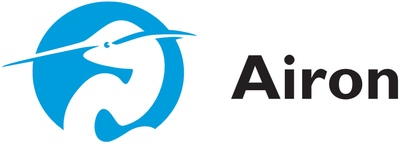

- Home
- Companies
- Airon Corporation
- Products
- pNeuton - Model NEO - Mini Ventilator

pNeuton - Model NEO - Mini Ventilator
pNeuton mini NEO Ventilator with CPAP for invasive and non-invasive patient support anywhere. The pNeuton mini NEO ventilator is a safe and secure way for neonatology to transport and perform MRI procedures specifically designed for neonatal ventilation.
MRI Compatible
The pNeuton mini NEO is MRI compatible allowing for image production with no artifact. The
ventilator can be placed right next to the MRI magnet with no Gauss line restriction, plus a remote alarm can be added to enhance patient safety.
The only truly fully pneumatic, portable ventilator for neonates with CPAP, oxygen mixing and patient alarms. The mini NEO is a small, lightweight ventilator with precise timing and pressure controls designed for use on patients from 400 grams to 20 kilograms.
With a broad range of clinical applications, the mini NEO provides immediate life support for at-risk deliveries, MRI and other radiology suites, transport and ventilation need – short or long term, even tandem therapy with high-frequency jet ventilation.
Benefits for the Patient
- One ventilator for transport and MRI/diagnostic procedures provides stability and safety with no change in patient circuit required
- Switch from CPAP nasal prongs/face mask to invasive ventilation seamlessly and without interruption
- A choice of continuous flow settings to provide the right ventilation for the size of your patient with the least amount of expiratory flow resistance
- Adjustable oxygen delivery from 21% to 100% to precisely match patient oxygen requirements
Benefits for the Healthcare Provider
- Night visible manometer to monitor patient pressure and effort
- Calibrated controls for precise and easy operation
- MRI conditional up to 3 T – with no gauss line magnet separation restrictions and an
optional remote alarm output for the control room - Patient disconnect and high-pressure alarms that work during non-invasive and
invasive ventilation - Rugged and tested to meet airworthiness standards
- Oxygen/air powered – no electrical connection or batteries
Benefits for your Budget
- Lightweight and portable with mounting bracket to any patient care incubator/bed
- Switch from invasive ventilatory support to non-invasive with just a simple change of
the patient interface - No batteries or electronics decrease preventative maintenance costs
- Minimal oxygen consumption to maximize transport times
Description
- Pneumatically powered for use on neonates and infants
- Patient range: 400 gram to 20 kilogram
- Modes: CMV, IMV + CPAP or CPAP only – continuous flow pressure limited
ventilation - miniFlow Patient Interface supports nasal prong/mask application
- Pressures displayed on manometer
- MRI conditional: static magnetic field of 3 T or less, maximum spatial gradient
magnetic field of 720-gauss/cm or less, no gauss line restriction - Gas consumption: flow setting + 3 L/min oxygen
- Weight: 9 lbs (4 kg)
- Dimensions: 6.0″ h x 8.7″ w x 7.8″ d
(15.2 cm x 22.1 cm x 19.8 cm) - Input gas requirement (oxygen and medical air): 55 psi ± 15 psi (3.8 bar ± 1 bar)
each gas - Meets International Standards for transport ventilators:
- ASTM F1100-90 – Ventilators Intended for Use in Critical Care
- ISO 10651-3:1997 – Lung Ventilators For Medical Use – Particular requirements for emergency and transport ventilators
- Airworthiness: RTCA DO-160G – Environmental Conditions and Test Procedures for Airborne Equipment, as applicable
Control Settings
- Inspiratory time 0.25 to 0.8 seconds
- Expiratory time 0.25 to 6 seconds
- Continuous Flow 6, 8, or 10 L/min
- Peak pressure 15 to 40 cm H2O (mbar)
- PEEP / CPAP 0 to 20 cm H2O (mbar)
- Oxygen 21 to 100% ± 3%, requires oxygen and medical air source
Audible and Visual Alarms
- All pneumatic alarm system (no batteries – requires minimum 30 psi / 2 bar gas supply pressure)
- Remote alarm output connection
- Patient circuit disconnection
- Automatic reset when alarm condition resolves
- 10-second response, 25-second silence/reset button
- Pressure: less than 3 cm H2O
- High pressure – independently adjustable from Peak Pressure
- Low gas source pressure
- If either source gas drops below 40 psi (2.8 bar)
- Continues operation as long as oxygen is available
